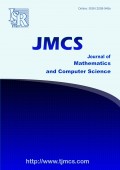

M. Palanikumar - Department of Mathematics, Saveetha School of Engineering, Saveetha Institute of Medical and Technical Sciences, Chennai-602105, India. N. Kausar - Department of Mathematics, Faculty of Arts and Science, Balikesir University, 10145 Balikesir, Turkey. V. Simic - University of Belgrade, Faculty of Transport and Traffic Engineering, Vojvode Stepe 305, Belgrade 11010, Serbia. - Faculty of Engineering, Dogus University, Istanbul, Turkiye. - Department of Computer Science and Engineering, College of Informatics, Korea University, Seoul 02841, Republic of Korea. D. Pamucar - Szèchenyi Istvàn University, Gyor, Hungary.
The goal of a quadri partitioned Pythagorean neutrosophic normal interval-valued fuzzy set (QPPNNIVFS) is to provide the neutrosophic sets a more comprehensive mathematical foundation. QPPNNIVFS divides the indeterminacy component into unknown and contradiction classes. The several aggregating operations that have been understood thus far are discussed here. The fuzzy weighted QPPNNIVFW averaging (QPPNNIVFWA), QPPNNIVFW geometric (QPPNNIVFWG), generalized QPPNNIVFW averaging (GQPPNNIVFWA) and generalized QPPNNIVFW geometric (GQPPNNIVFWG) are considered as a novel concept. We show that algebraic structures like associative, distributive, idempotent, bounded, commutative, and monotonic characteristics are satisfied by QPPNNIVFSs. We illustrate the practical applications of increased Euclidean distance, Hamming distance, score, and accuracy values. Unless there is a mathematical justification for selecting one cluster technique over another, the clustering strategy must be selected empirically. An algorithm that performs well on one set of data will not perform well on another. There are several approaches of conducting cluster analysis. These include social network analysis, distribution-based, density-based, centroid-based and hierarchical. Therefore, it is clear that the natural number \(\theta\) has a big impact on the models. To illustrate the comparison analysis, sensitivity analysis and the validity of our suggested methodologies are also conducted. The outcomes will be very helpful to decision makers in handling uncertain and conflicting data effectively.
M. Palanikumar, N. Kausar, V. Simic, D. Pamucar, Cluster analysis selecting tools using quadri partitioned Pythagorean neutrosophic normal interval-valued set with an aggregation operators, Journal of Mathematics and Computer Science, 41 (2026), no. 4, 487--518
Palanikumar M., Kausar N., Simic V., Pamucar D., Cluster analysis selecting tools using quadri partitioned Pythagorean neutrosophic normal interval-valued set with an aggregation operators. J Math Comput SCI-JM. (2026); 41(4):487--518
Palanikumar, M., Kausar, N., Simic, V., Pamucar, D.. "Cluster analysis selecting tools using quadri partitioned Pythagorean neutrosophic normal interval-valued set with an aggregation operators." Journal of Mathematics and Computer Science, 41, no. 4 (2026): 487--518